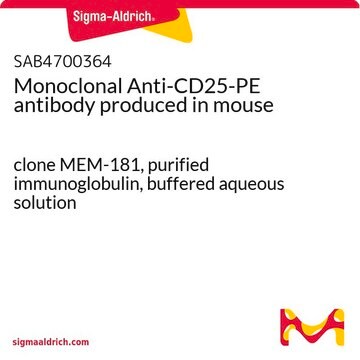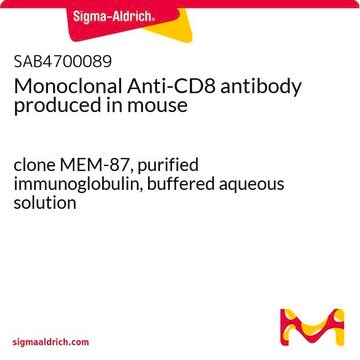F1773
Anti-CD4−FITC antibody, Mouse monoclonal
clone Q4120, purified from hybridoma cell culture
Synonym(s):
Monoclonal Anti-CD4
About This Item
Recommended Products
biological source
mouse
conjugate
FITC conjugate
antibody form
purified immunoglobulin
antibody product type
primary antibodies
clone
Q4120, monoclonal
form
buffered aqueous solution
mol wt
antigen 59 kDa
species reactivity
human
technique(s)
flow cytometry: 10 μL using 1 × 106 cells
isotype
IgG1
UniProt accession no.
shipped in
wet ice
storage temp.
2-8°C
target post-translational modification
unmodified
Gene Information
human ... CD4(920)
Looking for similar products? Visit Product Comparison Guide
Related Categories
General description
Specificity
Immunogen
Application
- identification, quantification and monitoring of helper/inducer T cells in peripheral blood, biological fluids, lymphoid organs, and other tissues
- analysis of T cell mediated cytotoxicity
- characterization of subtypes of T cell leukemias and lymphomas
- studies of T cells in health and disease
- flow cytometry
Biochem/physiol Actions
Target description
Physical form
Preparation Note
Disclaimer
Not finding the right product?
Try our Product Selector Tool.
Storage Class Code
10 - Combustible liquids
WGK
nwg
Flash Point(F)
Not applicable
Flash Point(C)
Not applicable
Personal Protective Equipment
Certificates of Analysis (COA)
Search for Certificates of Analysis (COA) by entering the products Lot/Batch Number. Lot and Batch Numbers can be found on a product’s label following the words ‘Lot’ or ‘Batch’.
Already Own This Product?
Find documentation for the products that you have recently purchased in the Document Library.
Our team of scientists has experience in all areas of research including Life Science, Material Science, Chemical Synthesis, Chromatography, Analytical and many others.
Contact Technical Service








